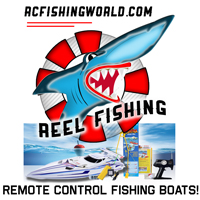Some Good Tips and Advice for Catching Crappie in the Ice
If there was ever a fish custom designed for ice fishing, crappies are it. They are plentiful, somewhat active all year, and wonderful table fare. They are also relatively easy to catch, once you locate them. To be consistently successful, all you need to do is learn a few trick of the trade.
The hardest part of crappie fishing, no matter what season, is locating them. Needless to say, a portable depth-finder is almost a necessity, and an underwater camera is also a good addition to your arsenal. In winter, crappie will seek out the warmest water they can find.
Without delving deeply into the science of Hydrology, as a rule of thumb, the warmest water will be found in the area that contains the largest mass of water. This will be the part that freezes last. There will also be other areas of warmer water, but this is a good place to start.
Once you have found this area, the other considerations are depth, structure, and oxygen content. Crappie will be found in the warmer water at depths from 15′, down to around 50′, suspending in some relation to structure. So, submerged timber in 30-40′ of water, near a channel or riverbed is good place to start. Shallow water can become oxygen depleted when the lake turns over in winter.
Most likely, you will catch smaller crappie in shallower water. Also, what holds true for crappie also appiles to other species, so be prepared for some added bonus fish, such as bluegills, smallmouth bass, and walleyes. In fact, another trick to locating crappie is that if you find yourself catching large bluegills at a certain death, try dropping your bait down about 5′-10′ deeper. Often crappie will be suspending right underneath them.
The best times of day for ice fishing are late morning and early afternoon. Crappie will often move along lines of structure from deeper to shallower water at these times, in search of food, warmth and oxygen. They will follow riverbeds, channels and other contours, from one area of structure to another.
When selecting tackle, the key word is Light. Long rods are not necessary for ice fishing. There are several specialty crappie combos, many with line counters and depth line locators that can be purchased for a nominal outlay. These are perfect, since you will be almost exclusively vertical fishing with tiny jigs and small bait. Any light, or ultralight rod around 4 to 5 long will work. The reels can be very simple. A light spinning, or spin-casting reel is adequate. You need to use nothing larger than 4 lb. test line.
One of the best rigs is a double hook, or jig rig with s lip bobber. These will detect the lightest of hits. Many times, the only indication of a bite will be the bobber moving around slowly, or maybe laying on its side.
Another trick is to make a strike indicator from an old guitar low string. Simply tie a 4 length of the string to the last section of your rod, with the ball-end even with your tip guide. Then, bend the string up until it makes a 45 degree angle with the rod. Run your line through the ball-end, then through the tip guide. This will detect the very lightest of bites.
Dan Eggertsen is a fishing researcher and enthusiast who is committed to providing the best crappie fishing information possible. Get more information on Catching Crappie in the Ice here: http://www.askcrappiefishing.com/
Tags: Advice, Arsenal, Catching, crappie fishing, Fish, ice fishing crappies, portable depth finder, science, Some, thumb, tips, tips and advice, underwater camera


